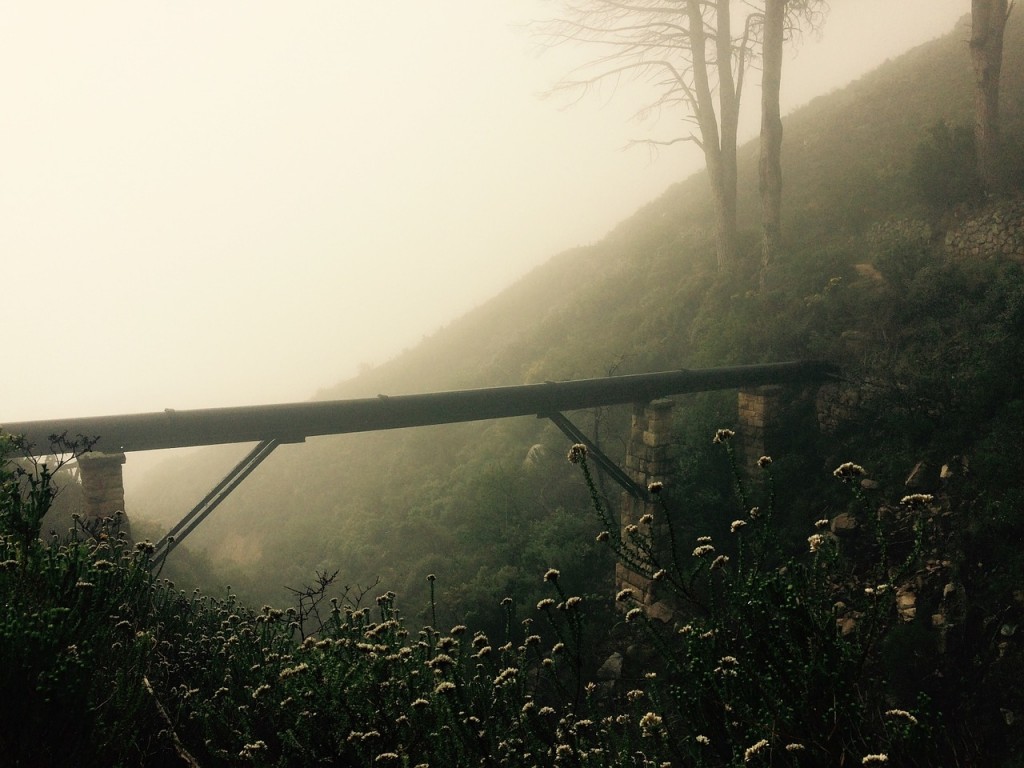This post will provide you with the required material to understand How To: Complete Stays And Staybolt Questions. Having a solid understanding of this material will provide you with greater success on your 2A1 examination.
All referenced page numbers are from the 2007 ASME Boiler & Pressure Vessel Code
We Will Cover The Following
- How to calculate the required area of stays or staybolts
- How to calculate the required area in diagonal stays
- Review and provide variable definitions for formulas provided in the Boiler & Pressure Vessel Code, along with derived formulas to make calculations easier to complete.
- Review practice questions for how to complete stays and staybolt calculations
Formula
Area Stays Staybolts PG-49.1
![]()
Area Stays or Staybolts PFT-26.1 Requirements Included
![]()
PFT-32.1 Stresses In Diagonal Stays
![]()
PG-46.1 Stayed Surfaces MAWP

Area Of Circle Using Diameter
![]()
Page 7 Academic Supplement

The above transposed formula to determine the diameter from the area of a circle is not provided in your Academic Supplement
Area Of Circle Using Radius
![]()
Page 7 Academic Supplement

The above transposed formula to determine the radius from the area of a circle is not provided in your Academic Supplement
Formula Variables
Area Stays or Staybolts PFT-26.1 Requirements Included
![]()
The variables used in the formula provided above are defined in PFT-26.1 on page 97
Net Area = Total area of stays or staybolts
MAWP = Maximum allowable working pressure
Staybolts = Number of stays or staybolts
S = Maximum allowable stress value given in Table 1A of Section II, Part D, psi (MPa)
PFT-32.1 Stresses In Diagonal Stays
![]()
The variables used in the formula provided above are defined in PFT-32.1 on page 100
A = Sectional area of diagonal stay
a = Sectional area of direct stay
L = Length of diagonal stay as indicated in Fig. PFT-32
l = Length of the line drawn at right angles to boiler head or surface supported to center of palm of diagonal stay, as indicated in Fig. PFT-32, in. (mm)
PG-46.1 Stayed Surfaces MAWP

The variables used in the formula provided above are defined in PG-46.1 on page 26/27
C = 2.1 for welded stays or stays screwed through plates not over 7/16 in. (11mm) in thickness with ends riveted over
= 2.2 for welded stays or stays screwed through plates over 7/16 in. (11mm) in thickness with ends riveted over
= 2.5 for stays screwed through plates and fitted with single nuts outside of plate, or with inside and outside nuts, omitting washers
= 2.8 for stays with heads not less than 1.3 times the diameter of the stays screwed through plates or made a taper fit and having the heads formed on the stay before installing them, and not riveted over, said heads being made to have a true bearing on the plate
= 3.2 for stays fitted with inside and outside nuts and outside washers where the diameter of washers is not less than 0.4p and thickness is not less than t
P = Maximum allowable working pressure, psi (MPa)
p = Maximum pitch measured between straight lines passing through the centres of the staybolts in the different rows, which lines may be horizontal and vertical, or radial and circumferential, in (mm)
S = Maximum allowable stress value given in Table 1A of Section II, Part D, psi (MPa)
t = Minimum thickness of plate, in. (mm)
Area Of Circle Using Diameter
![]()
The above formula can be found in page 7 of your Academic Supplement, the variable definitions are not provided.
Area = Area of circle
Pi Symbol = 3.141592654
d = Circle diameter
Area Of Circle Using Radius
![]()
The above formula can be found in page 7 of your Academic Supplement, the variable definitions are not provided.
A = Area of a circle
Pi Symbol = 3.141592654
r = Circle radius
[table id=1 /]
How To: Complete Stays And Staybolt Questions
Note: All code questions are to be calculated in (mm) and (MPa) unless otherwise stated. Convert accordingly and properly before the calculation.
Question #40
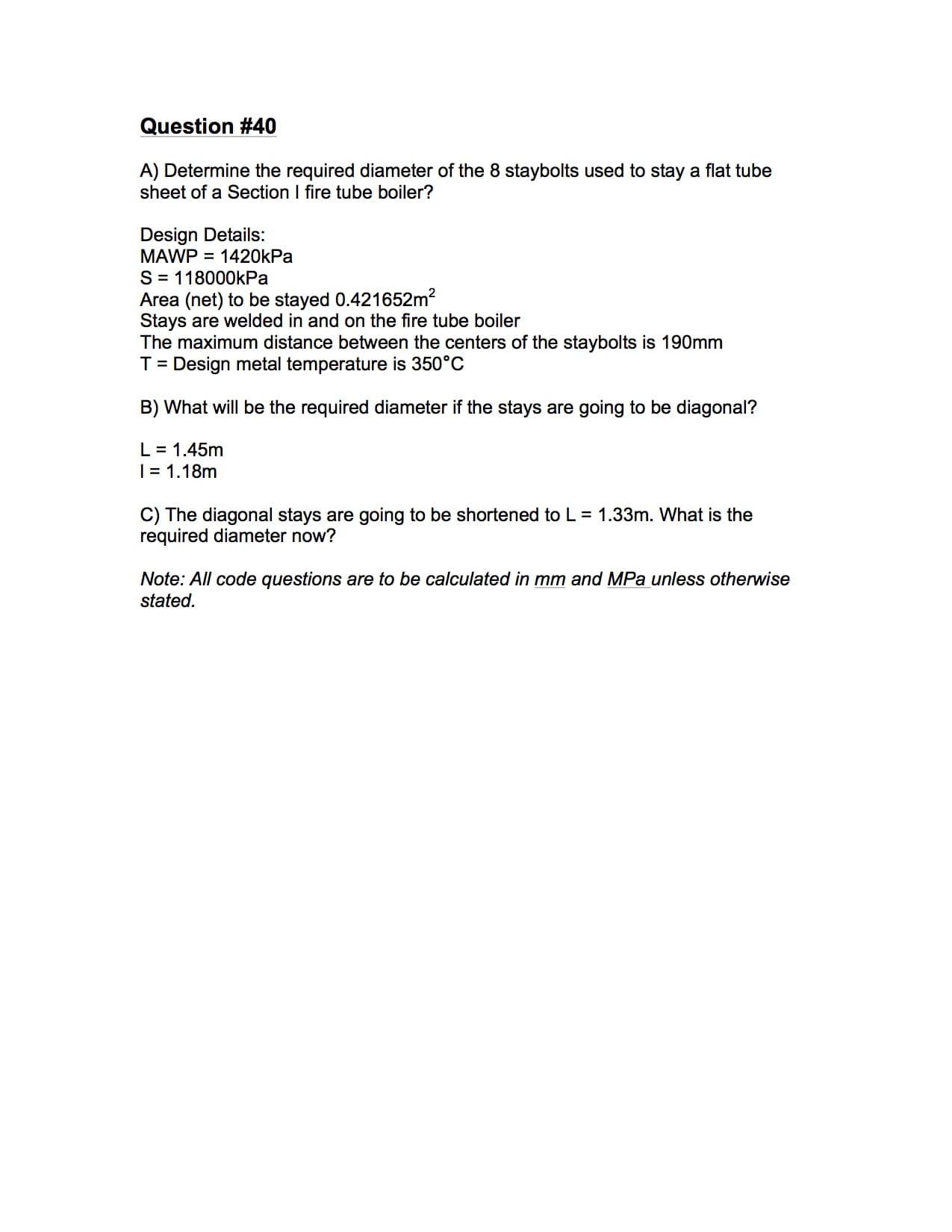
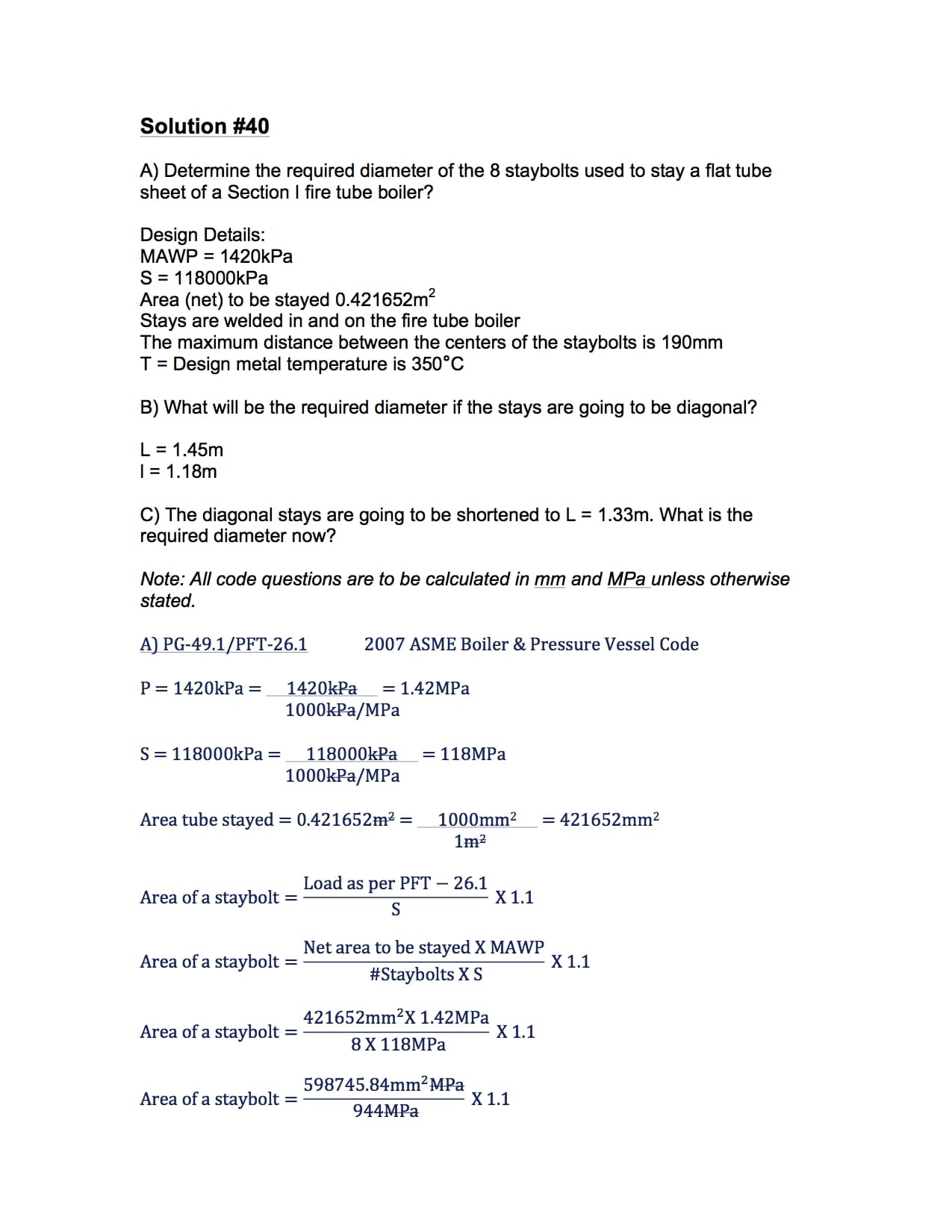
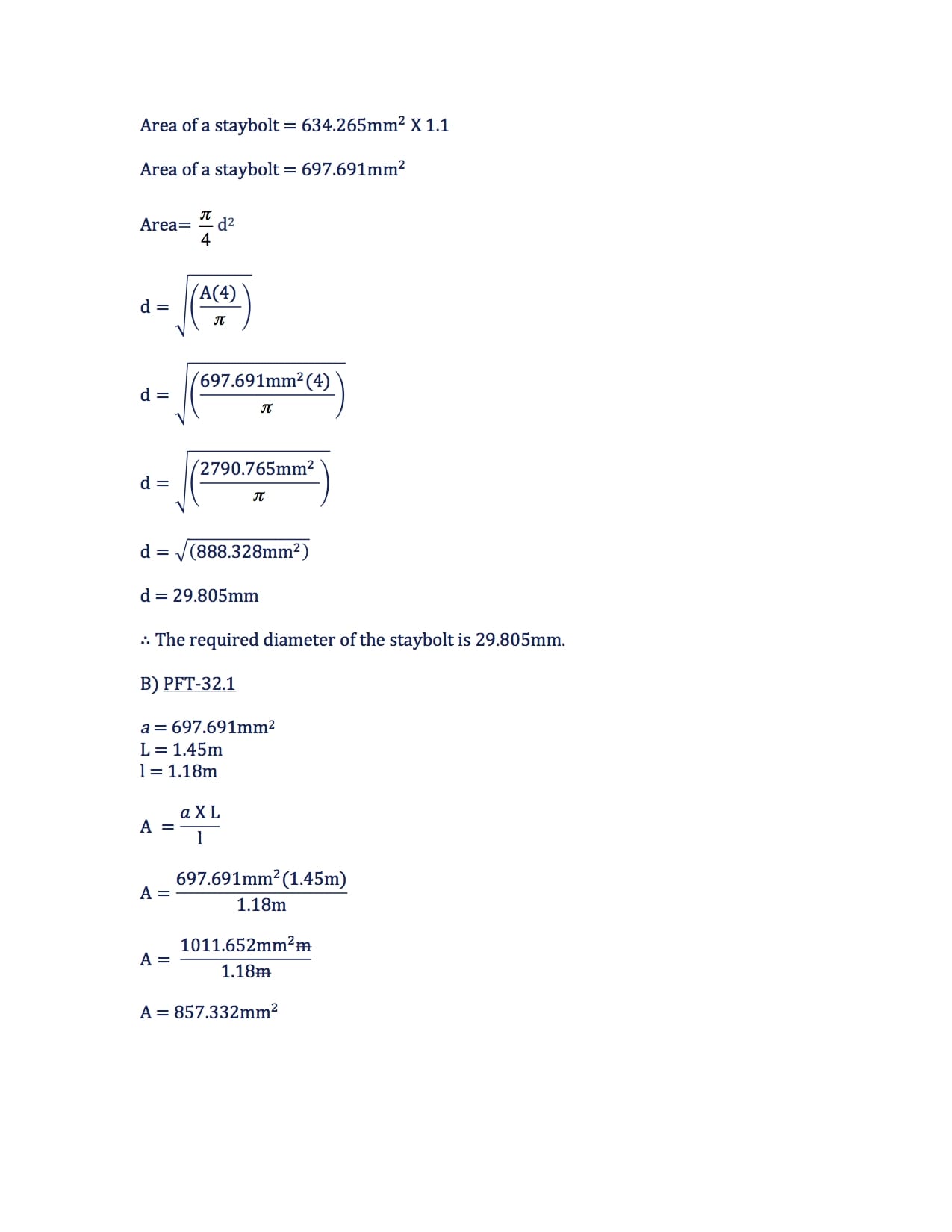
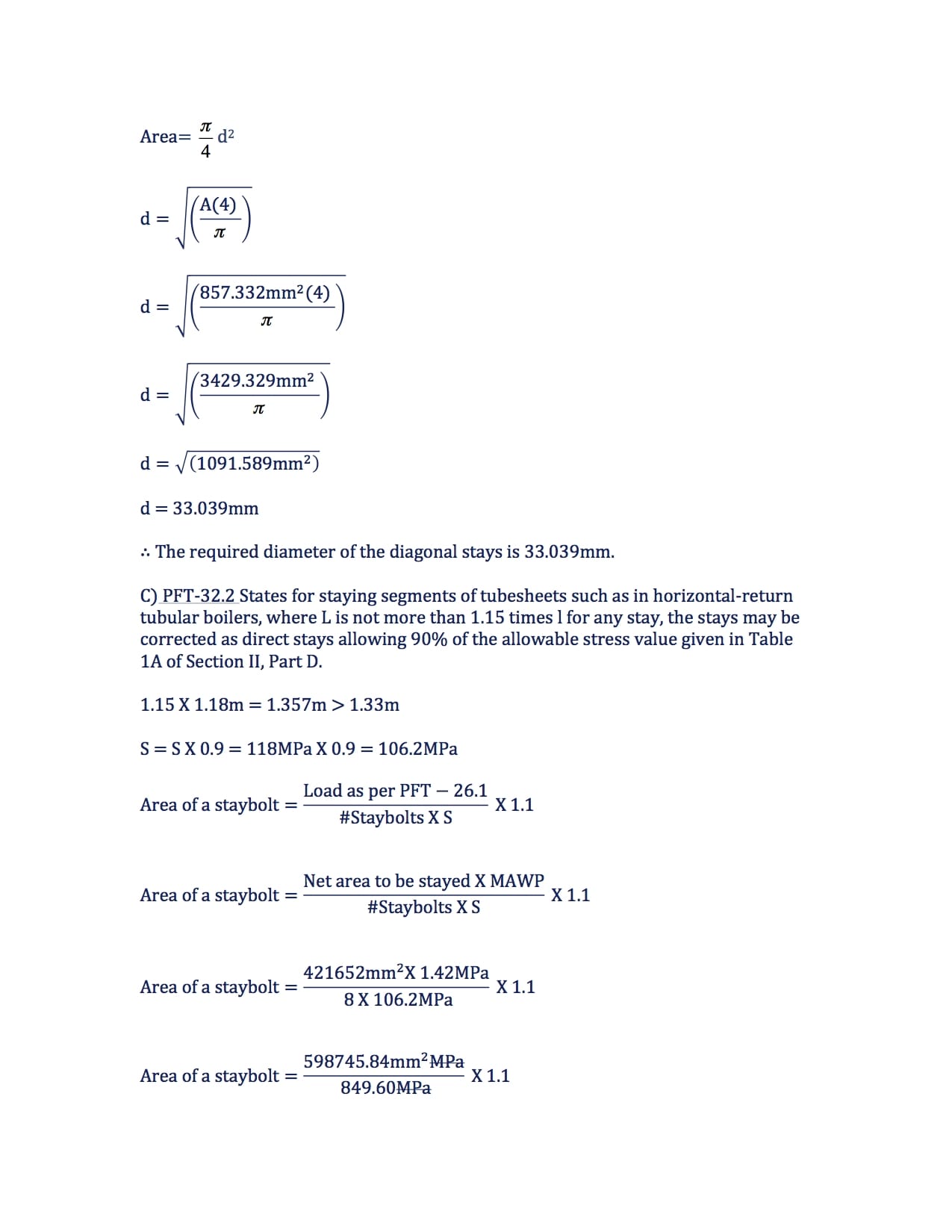
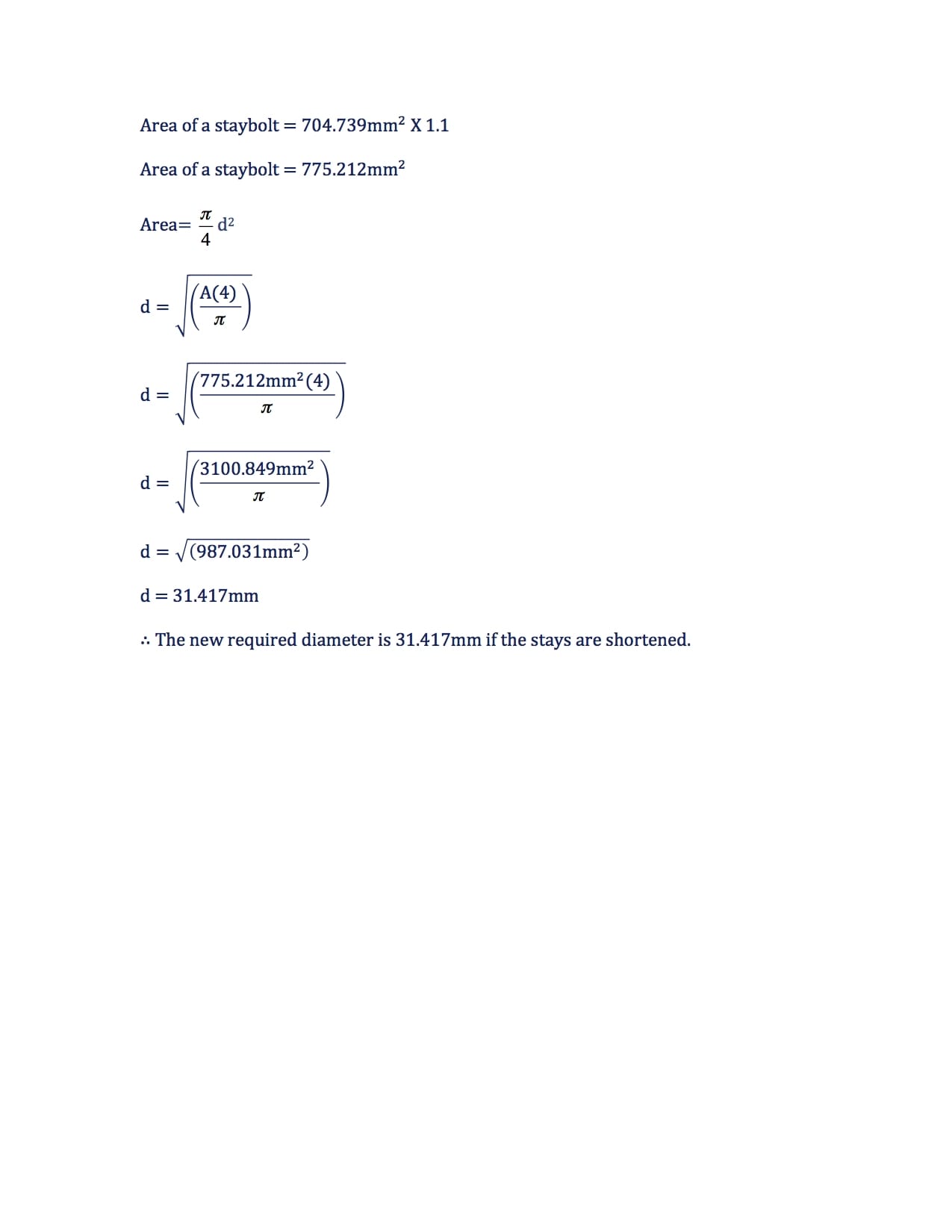
Question #41
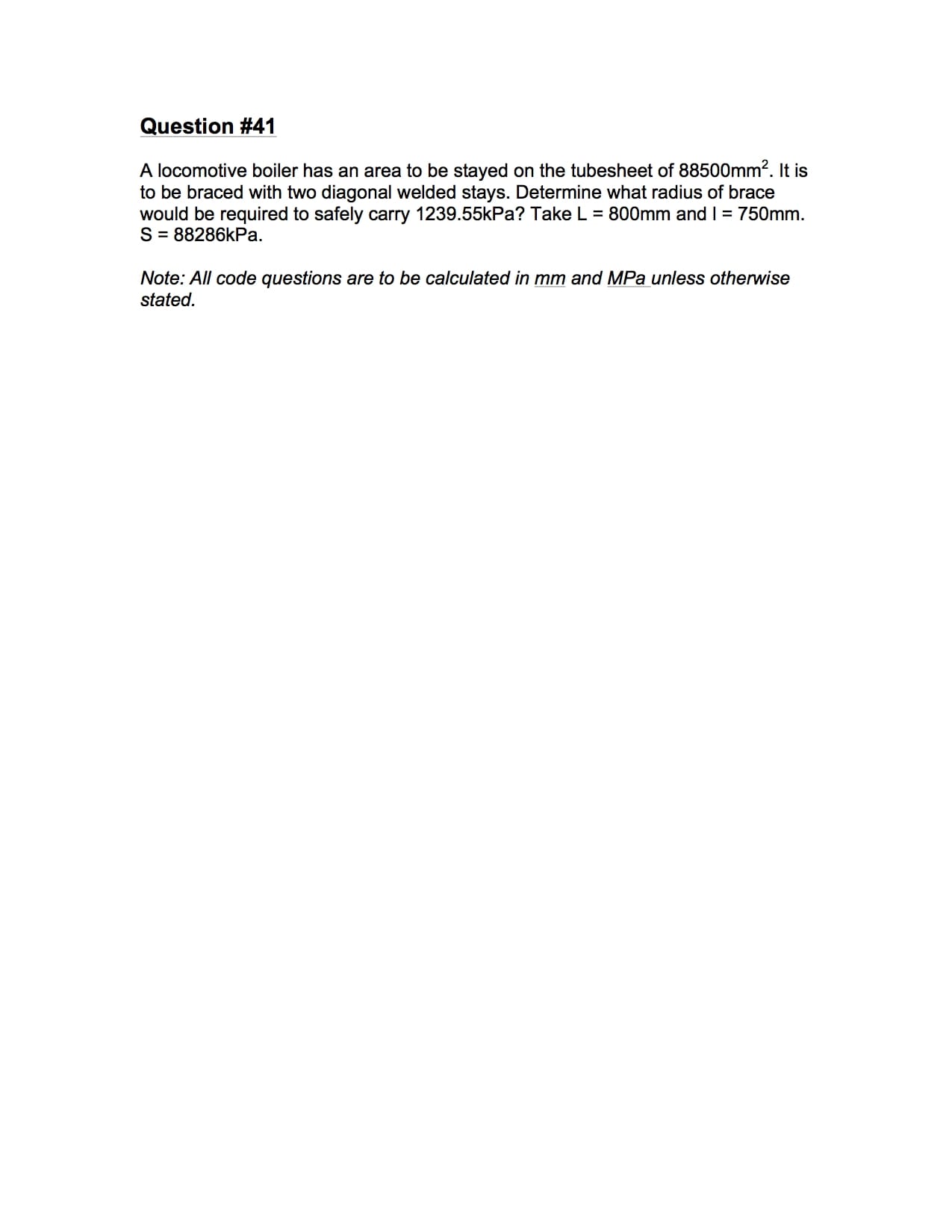
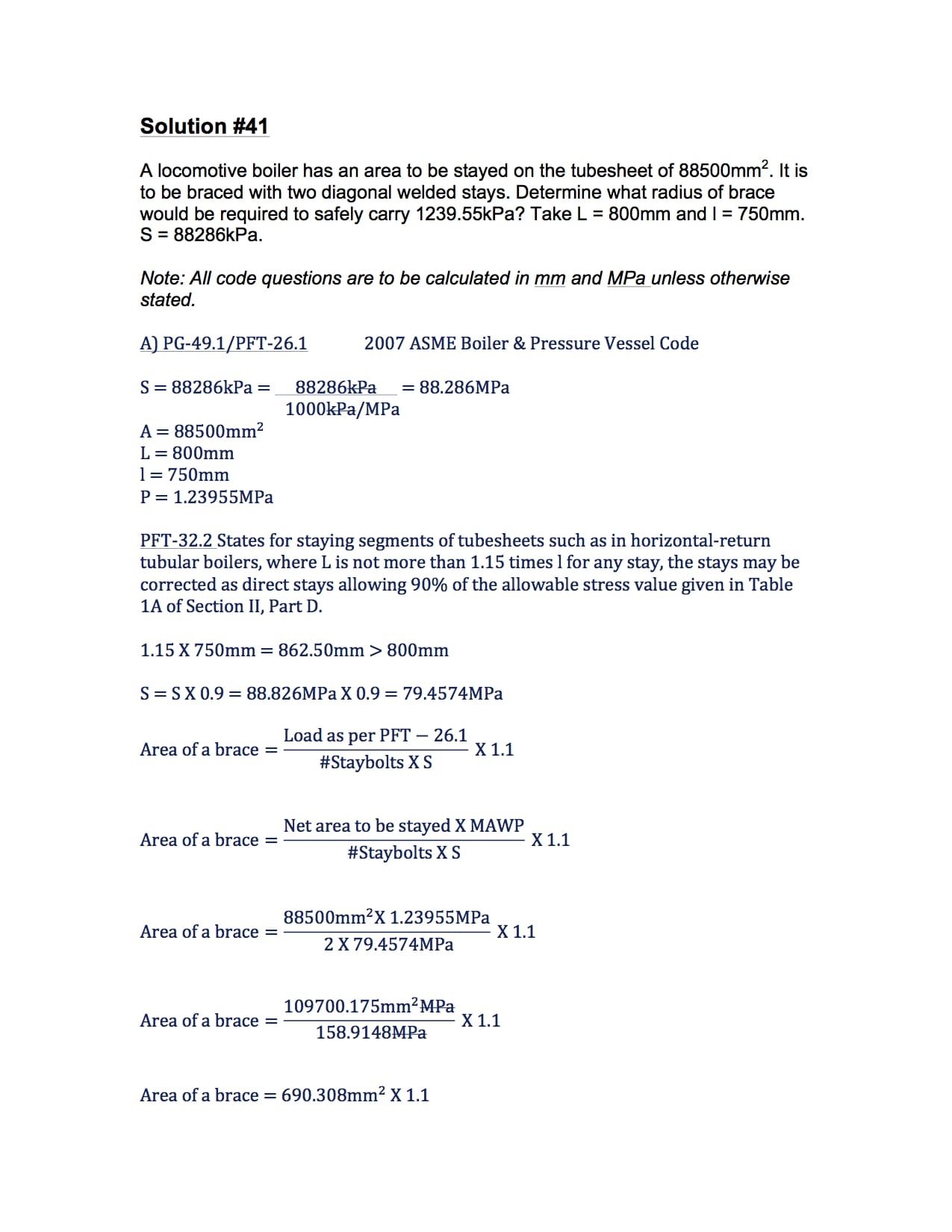
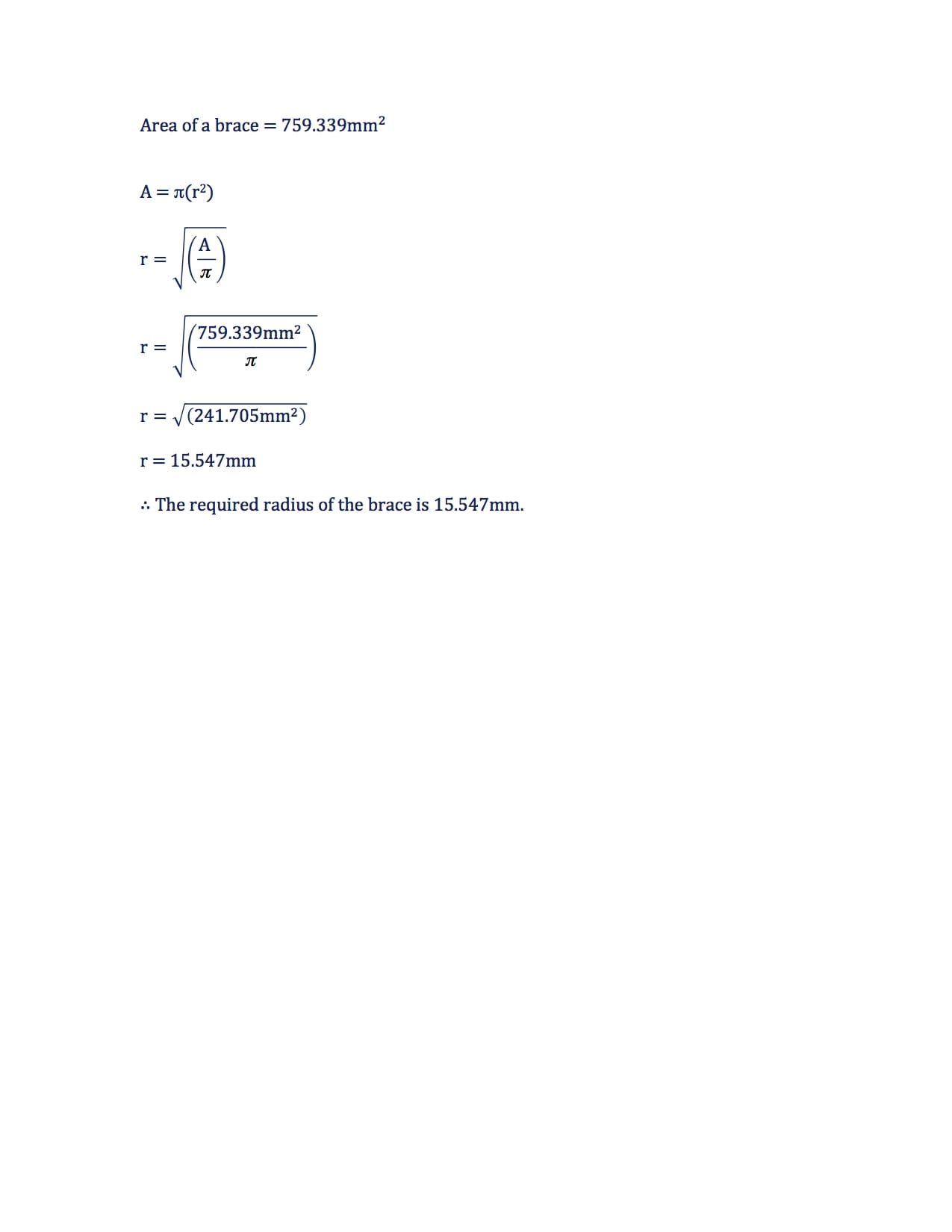
Question #42
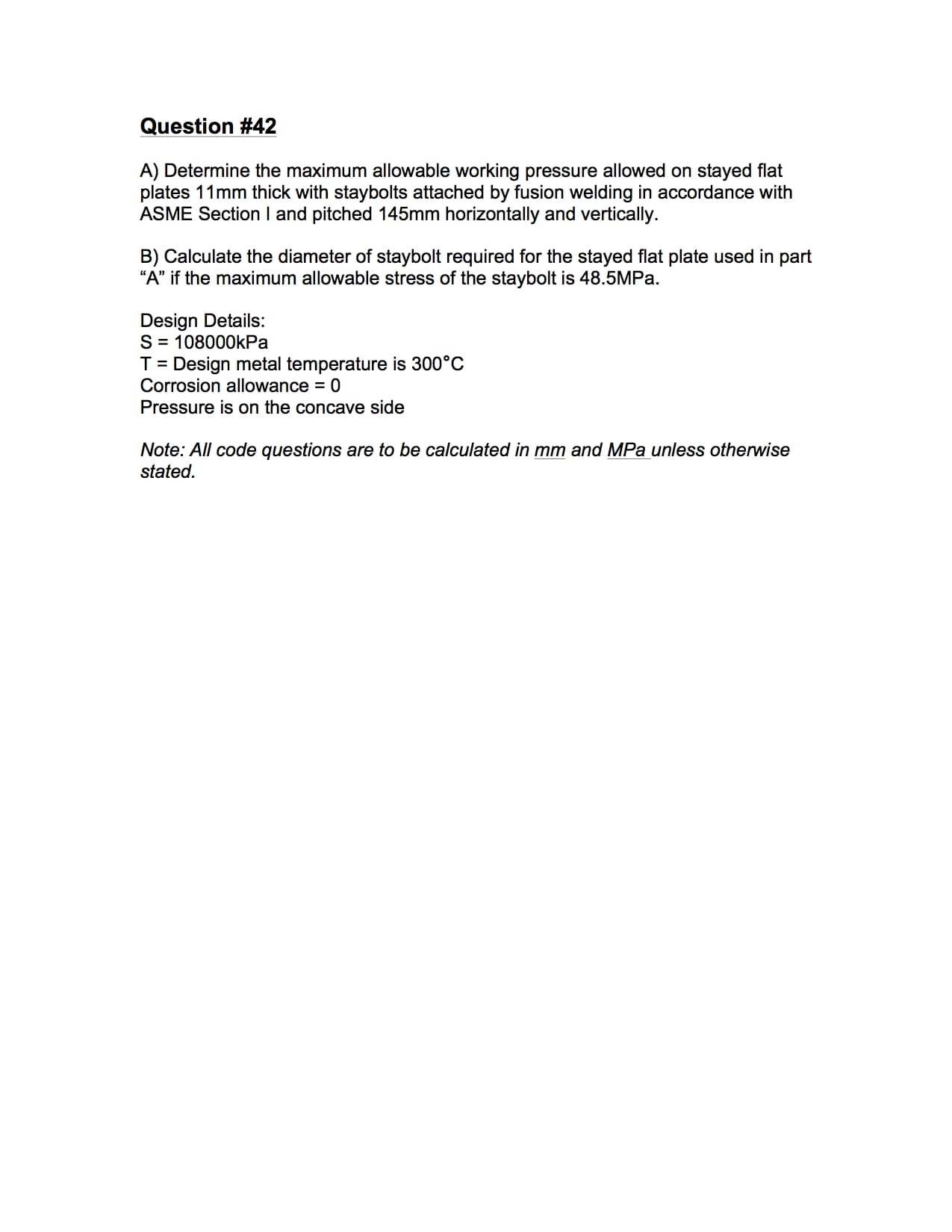
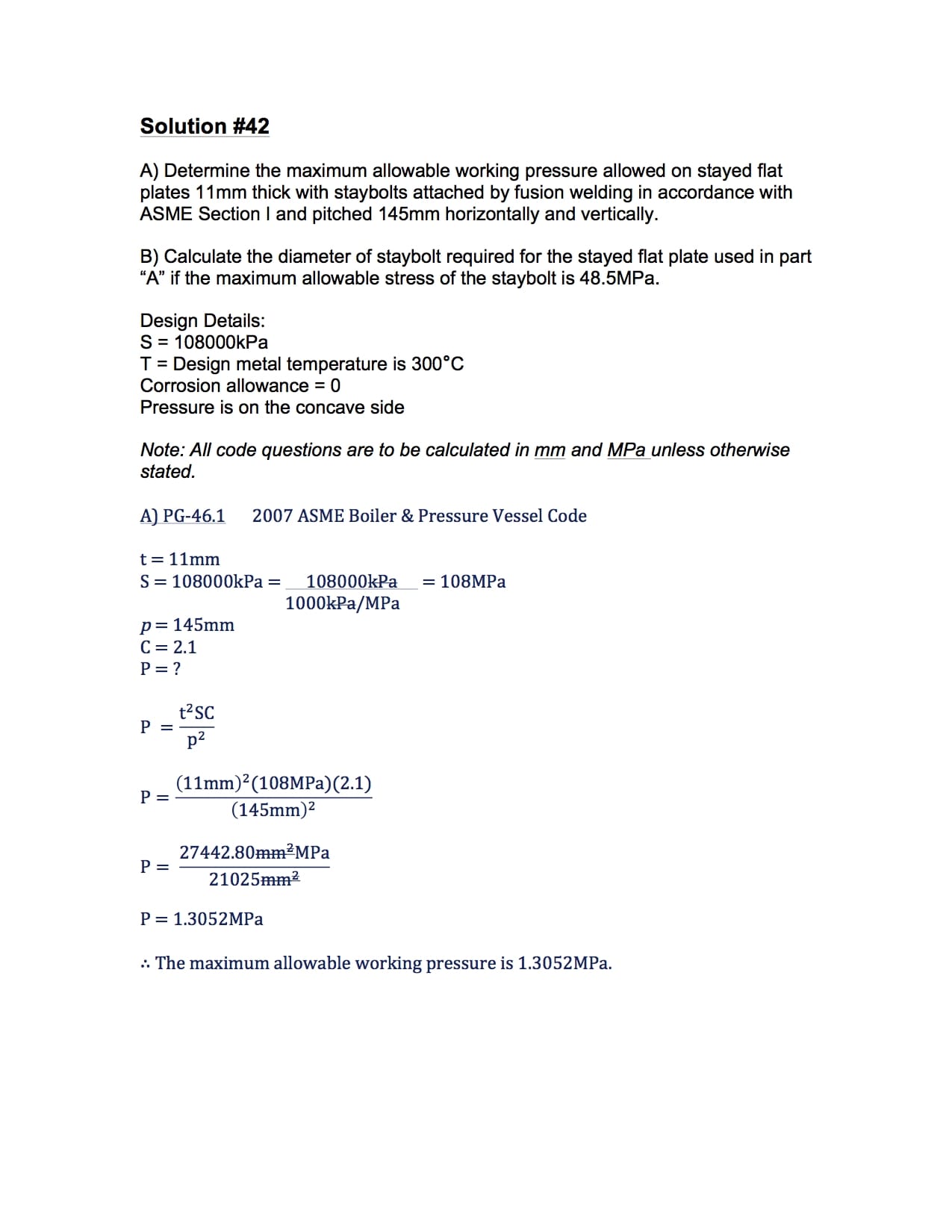
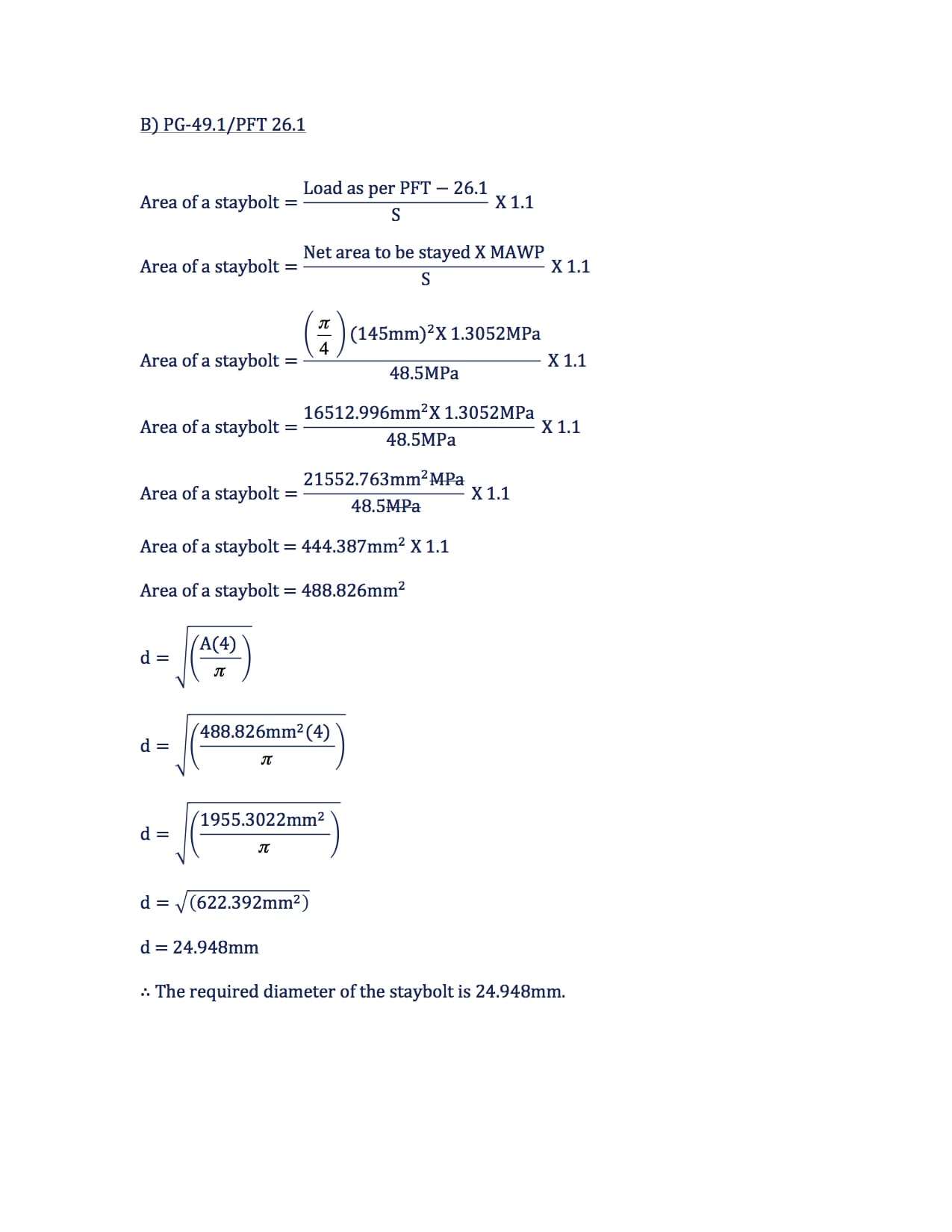
SUMMARY: How To: Complete Stays And Staybolt Questions
Did the examples provided helped you understand How To: Complete Stays And Staybolt Questions?
Have you followed Power Engineering 101 on Facebook or Twitter?
Have a great weekend.
Power Engineering 101

